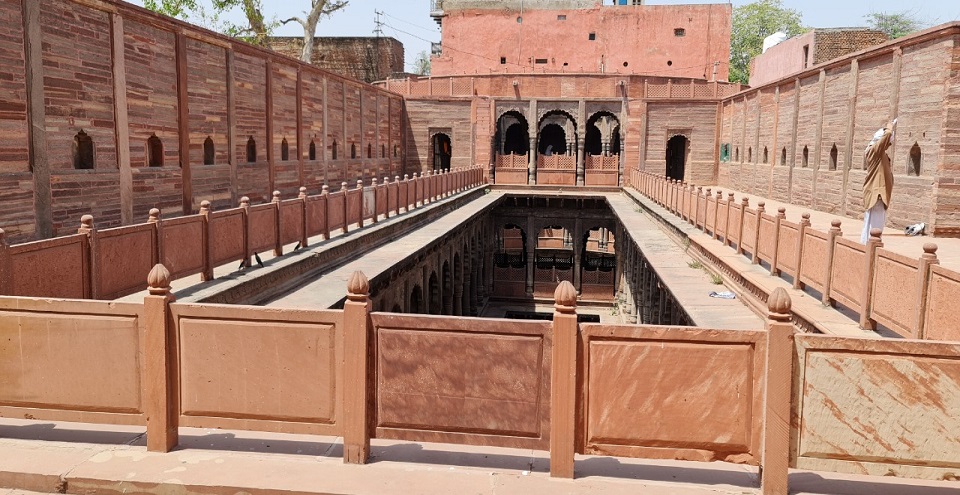
Royal Stepwell: A Glimpse into Ancient Water Engineering
Royal stepwells, also known as “Baoris”, “Baolis”, or “Vav”, are fascinating structures found across India, particularly in Rajasthan and Gujarat. These architectural marvels were built to access groundwater in arid regions and often serve as a testament to the advanced engineering and architectural skills of ancient India. Here’s an in-depth look at royal stepwells, highlighting their significance, architectural features, and notable examples.
Overview of Royal Stepwells
1. Purpose and Function
Water Management: Royal stepwells were primarily constructed to access and store groundwater in regions with limited water resources. They functioned as vital sources of water for drinking, irrigation, and other daily needs.
Architectural Innovation: These structures are designed with a series of steps leading down to the water level, allowing access to the water regardless of its depth. The design also helps in maintaining the water temperature and quality.
2. Architectural Features
Multi-Storied Design: Most royal stepwells feature a multi-storied design with a series of descending steps, terraces, and landings. The number of stories can vary based on the depth of the well and the architectural style.
Carvings and Ornamentation: Stepwells are often adorned with intricate carvings, including floral patterns, mythological scenes, and architectural motifs. The decoration reflects the artistic and cultural heritage of the region.
Pavilions and Mandapams: Many stepwells include pavilions or mandapams (pillared halls) at various levels, which provided shade and resting areas for people accessing the well.
Water Storage and Filtration: The design of stepwells includes features to filter and store water efficiently. Some stepwells also have channels and pipes to direct water to different areas.
Notable Examples of Royal Stepwells
1. Rani Ki Vav (Gujarat)
- Location: Patan, Gujarat.
- Description: Rani Ki Vav, also known as Queen’s Stepwell, is a UNESCO World Heritage site and one of the most elaborate and well-preserved stepwells in India. It features a seven-story structure with intricate carvings depicting Hindu deities, scenes from mythology, and ornate architectural details.
2. Adalaj Vav (Gujarat)
- Location: Adalaj, near Ahmedabad, Gujarat.
- Description: Adalaj Vav is a prominent stepwell known for its stunning architecture and detailed carvings. Built in 1499, it includes a three-story structure with beautifully decorated pillars, balconies, and deep well.
3. Chand Baori (Rajasthan)
- Location: Abhaneri, Rajasthan.
- Description: Chand Baori is one of the deepest and largest stepwells in India, with over 3,500 steps arranged in a geometric pattern. The stepwell features a grand entrance, intricate carvings, and a remarkable symmetry.
4. Rani Ji Ki Baori (Rajasthan)
- Location: Bundi, Rajasthan.
- Description: Rani Ji Ki Baori, built in the 17th century, is known for its majestic design and intricate carvings. It reflects the architectural and artistic skills of the Bundi rulers.
5. Panna Meena Ka Kund (Rajasthan)
- Location: Jaipur, Rajasthan.
- Description: This stepwell, located near Amer Fort, features a unique design with symmetrical staircases leading down to the water. It is a popular example of traditional Rajasthani architecture.
Visiting Royal Stepwells
1. Best Time to Visit
- Climate Considerations: The best time to visit royal stepwells is during the cooler months, from October to March. The weather is more pleasant for exploring these historic sites.
2. Dress Code
- Comfortable Attire: Wear light and comfortable clothing suitable for walking and exploring. Sturdy footwear is recommended, as some stepwells may have uneven steps and surfaces.
3. Photography
- Permits and Guidelines: Photography is generally allowed at most stepwells, but it’s advisable to check for any specific restrictions or guidelines. Capturing the architectural details and carvings can provide memorable photographs.
4. Facilities
- Amenities: Basic amenities such as restrooms and local eateries may be limited near some stepwells. It’s a good idea to carry essentials like water and snacks for a comfortable visit.
5. Local Attractions
- Explore Nearby Sites: Many stepwells are located near other historical and cultural attractions. For example, visiting Chand Baori in Abhaneri allows you to explore nearby forts and temples, while Rani Ki Vav in Patan is close to other historic sites.
Royal stepwells are remarkable examples of ancient water management and architectural prowess. Their intricate designs, historical significance, and artistic details make them important cultural heritage sites. Whether you’re interested in history, architecture, or simply enjoying the beauty of these structures, visiting a royal stepwell offers a unique and enriching experience. Each stepwell tells a story of its time and provides a glimpse into the ingenuity and creativity of past civilizations.
